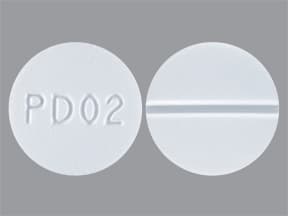Recurrent Urinary Tract Infection After Midurethral Sling: A Retrospective Study
Jessica Hammett et al. Female Pelvic Med Reconstr Surg. 2016 Nov/Dec.
Abstract
Objectives: Our primary objective was to estimate the proportion of patients with culture-proven urinary tract infection (UTI) and recurrent UTI after midurethral sling (MUS), as well as to evaluate their risk factors. Our secondary objective was to characterize the difference in the proportion of patients with recurrent UTI before and after MUS.
Methods: We conducted a retrospective study of patients who underwent MUS from 2009 to 2012 within a large health maintenance organization and subsequently had documentation of at least 1 positive urine culture (>100 K CFU/mL) within 1 year. Validated procedural and diagnostic codes were used to identify patients undergoing MUS and the diagnosis of UTI, respectively.
Results: Of the 7461 MUS performed, 883 (12%) patients had at least 1 culture-proven UTI and 258 (3.5%) patients met the definition of recurrent UTI postoperatively. Of those 883 patients, 89 (10%) patients met the definition of recurrent UTI before, and 258 (29%) patients after, MUS. McNemar χ test revealed that patients were more likely to have recurrent UTI after MUS compared with before (P < 0.0001). In multivariate logistic regression, Caucasian (odds ratio [OR], 1.60, 95% confidence interval [95% CI], 1.12-2.29; P = 0.01) and African-American (OR, 3.42; 95% CI, 1.42-8.29; P = 0.01) ethnicity, older age (OR, 1.02; 95% CI, 1.00-1.04; P = 0.03), and a history of recurrent UTI (OR 3.79, 95% CI 1.88-7.93, P = 0.0003) were risk factors for postoperative recurrent UTI.
Conclusions: In this population, preoperative recurrent UTI was the only modifiable risk factor associated with an increased risk of postoperative recurrent UTI.
PubMed Disclaimer
Similar articles
-
Prevalence and risk factors for urinary tract infection up to one year following midurethral sling incontinence surgery.
Weintraub AY, Reuven Y, Paz-Levy D, Yohay Z, Idan I, Elharar D, Glinter H, Tzur T, Yohay D. Weintraub AY, et al. Eur J Obstet Gynecol Reprod Biol. 2018 Mar;222:146-150. doi: 10.1016/j.ejogrb.2018.01.028. Epub 2018 Jan 31. Eur J Obstet Gynecol Reprod Biol. 2018. PMID: 29408746
-
The impact of midurethral sling surgery on the development of urinary tract infections.
Berger AA, Tan-Kim J, Menefee SA. Berger AA, et al. Int Urogynecol J. 2022 Apr;33(4):829-834. doi: 10.1007/s00192-021-04779-x. Epub 2021 Apr 2. Int Urogynecol J. 2022. PMID: 33797594
-
Urinary Tract Infection After Midurethral Sling.
Varasteh Kia M, Long JB, Chen CCG. Varasteh Kia M, et al. Female Pelvic Med Reconstr Surg. 2021 Jan 1;27(1):e191-e195. doi: 10.1097/SPV.0000000000000890. Female Pelvic Med Reconstr Surg. 2021. PMID: 32427625
-
Fusco F, Abdel-Fattah M, Chapple CR, Creta M, La Falce S, Waltregny D, Novara G. Fusco F, et al. Eur Urol. 2017 Oct;72(4):567-591. doi: 10.1016/j.eururo.2017.04.026. Epub 2017 May 4. Eur Urol. 2017. PMID: 28479203 Review.
-
Sling surgery for stress urinary incontinence in women: a systematic review and metaanalysis.
Schimpf MO, Rahn DD, Wheeler TL, Patel M, White AB, Orejuela FJ, El-Nashar SA, Margulies RU, Gleason JL, Aschkenazi SO, Mamik MM, Ward RM, Balk EM, Sung VW; Society of Gynecologic Surgeons Systematic Review Group. Schimpf MO, et al. Am J Obstet Gynecol. 2014 Jul;211(1):71.e1-71.e27. doi: 10.1016/j.ajog.2014.01.030. Epub 2014 Jan 30. Am J Obstet Gynecol. 2014. PMID: 24487005 Review.
Cited by
-
Multidimensional outcomes of suburethral synthetic midurethral sling removal.
Shakir NA, Wang C, Singla N, Alhalabi F, Christie A, Lemack GE, Zimmern PE. Shakir NA, et al. World J Urol. 2020 Aug;38(8):2005-2012. doi: 10.1007/s00345-019-02987-1. Epub 2019 Nov 6. World J Urol. 2020. PMID: 31696257









